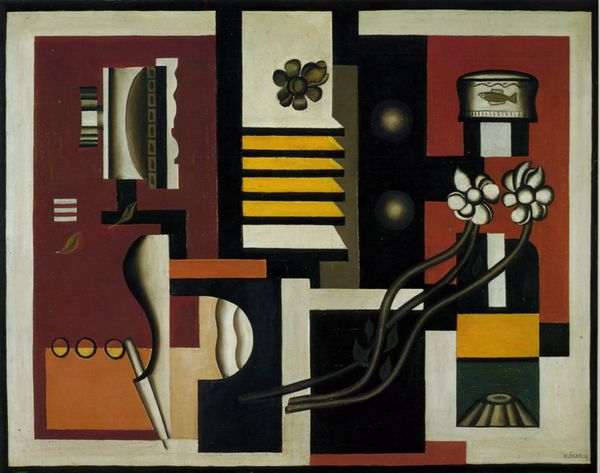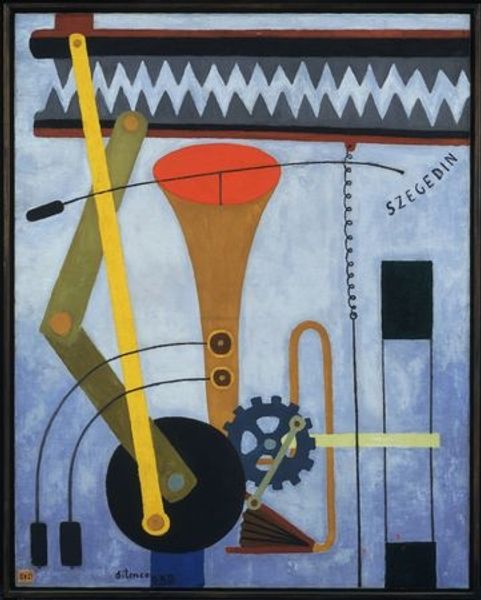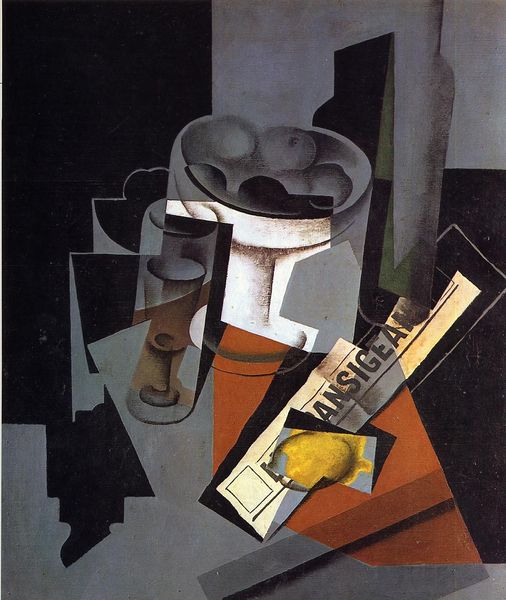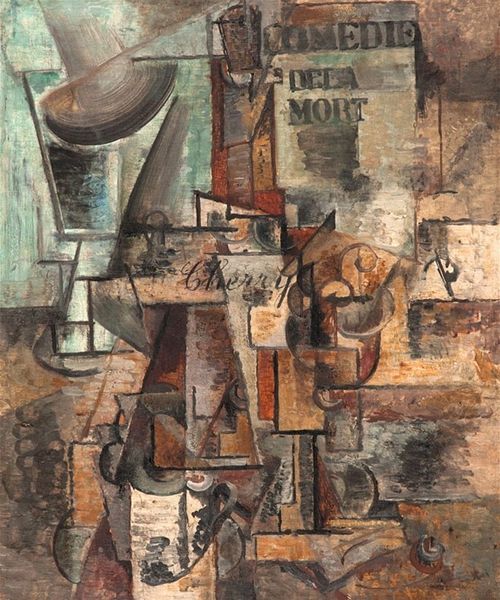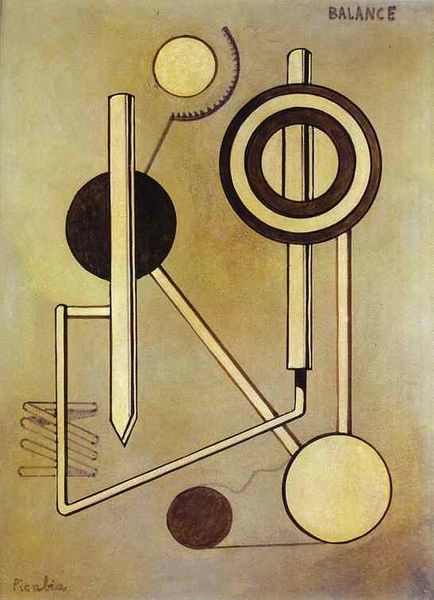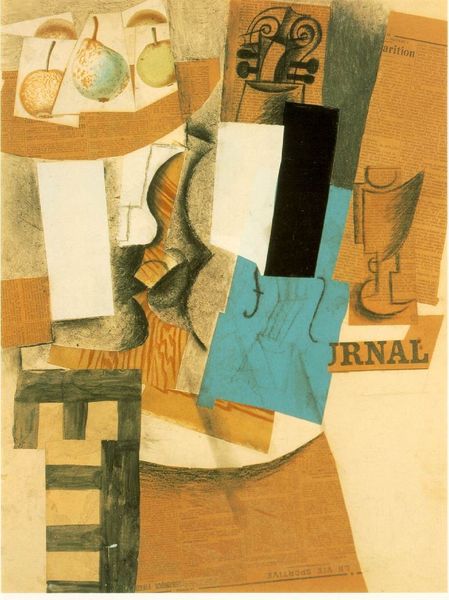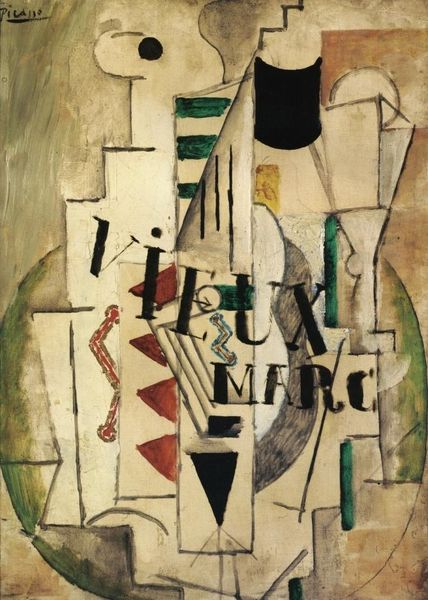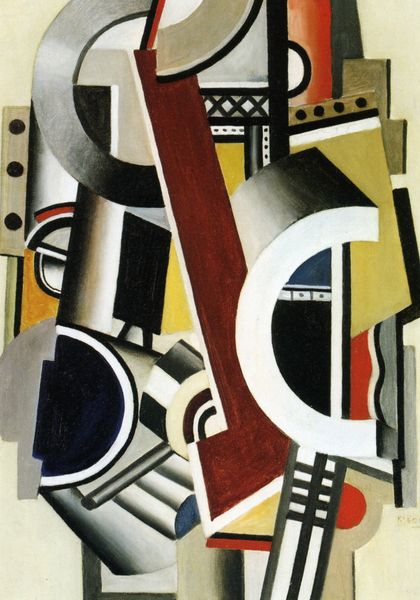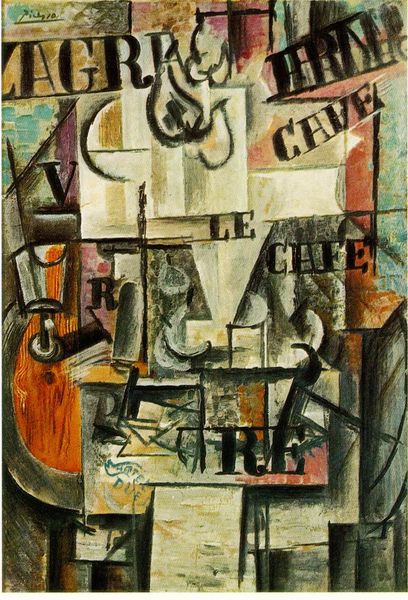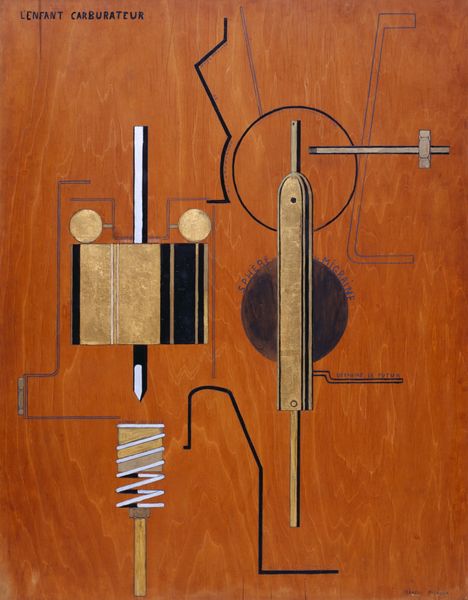
mixed-media, oil-paint
#
cubism
#
mixed-media
#
oil-paint
#
oil painting
#
dada
#
geometric-abstraction
#
abstraction
#
mixed media
Dimensions: 95 x 72 cm
Copyright: Public domain US
Curator: Before us, we have Francis Picabia's "Love Parade," a mixed-media artwork created in 1917. Editor: Immediately, it strikes me as rather mechanistic, even cold. The color palette is muted save for the jarring red funnel near the top; forms reduce to pure geometry. Curator: Indeed. Picabia’s move toward machine aesthetics reflected a disillusionment with traditional values during World War I. He presented the machine as a symbol of modern life stripped bare of sentimentalism. Editor: How do you interpret the composition itself? It seems almost like a schematic, but for what? Curator: Precisely, the work appears to be constructed from distinct geometric forms: rectangles, circles, lines all layered upon one another. If we observe the piece as a totality of discrete components, the artist’s approach challenges conventional notions of representational harmony, revealing instead, the visual construction and deconstruction that speaks directly of Picabia’s Dadaist vision. Editor: I'm still grappling with that title: "Love Parade." This assembly of cold metal, unfeeling in its geometries seems utterly devoid of love. Perhaps it is a commentary on the mechanized and impersonal nature of modern relationships during that era? Curator: I would argue it’s a deconstruction of the very notion. These shapes—a grinding wheel, connecting rods—suggest a mechanical process mimicking intimacy but ultimately highlighting its artifice. The “parade” becomes a procession of hollow gestures. Picabia critiques societal spectacles around love while engaging us, his viewers, within that dynamic. Editor: Do you believe then, this piece aims to challenge or subvert what it means to engage with emotional experiences? Curator: Precisely so. Picabia, here, creates visual symbols meant to provoke thoughtful skepticism rather than sentimentality. He does not deny love but investigates love within cultural representations that seem utterly at odds with sincere expressions or gestures. It questions our cultural obsession of reducing experiences such as "love" to pure calculation and predictability. Editor: Well, after our close inspection of Picabia’s mechanized and geometric construction, its implications of detachment ring with greater force. I'm seeing that the “parade” perhaps is not just impersonal, but illusory. Curator: In viewing, we actively participate in a vital dialogue Picabia initiates. I suspect he prompts not mere observations but critical evaluations on the constructs within culture we so willingly perpetuate.
Comments
No comments
Be the first to comment and join the conversation on the ultimate creative platform.


